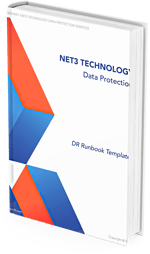 Data security has always been at the forefront of a business, but with the latest, not to mention drastic, uptick in security breaches, it's more important than ever. Testing data security and data recovery is HUGE for a business. Testing your disaster recovery plan helps determine the critical, business functions as well as the importance, and impact, those functions have on the business. Testing can expose the losses a business will retain when any of those functions are interrupted, or worse, halted. It's important to know the best practices of security testing, but equally important, is having a plan in the event a breach occurs. Hence the introduction of the Disaster Recovery Runbook.
Data security has always been at the forefront of a business, but with the latest, not to mention drastic, uptick in security breaches, it's more important than ever. Testing data security and data recovery is HUGE for a business. Testing your disaster recovery plan helps determine the critical, business functions as well as the importance, and impact, those functions have on the business. Testing can expose the losses a business will retain when any of those functions are interrupted, or worse, halted. It's important to know the best practices of security testing, but equally important, is having a plan in the event a breach occurs. Hence the introduction of the Disaster Recovery Runbook.
The Disaster Recovery Runbook is created specifically for a seamless recovery. It is the business’ specific blueprint on how to recover quickly and efficiently from a DR event.
But what all goes into a Disaster Recovery Runbook?
A DR Runbook explains not only the necessary steps to recover from a DR event, but it lays out the current infrastructure, people involved and their specific roles, the failover environment, the failover process and the failback process too. It’s a set of organized, Standard Operating Procedures (SOPs) specific to a DR event. The runbook provides a consistency that when done repeatedly, there is little to no deviation or failure to execute.
A DR runbook is a working, living document that is unique to every organization. With routine testing, the runbook is changed or updated to reflect the most current business requirements for complete business continuity. Not only do IT environments change, but roles and employment change too. It’s important that everyone involved is familiar with the runbook, every detail of the recovery plan is documented and it’s up to date.
Here’s a general outline for a Runbook:
-
- Roles
- Defined Disaster Levels
- Escalation List of DR Team/Contact List
- Current Infrastructure Environment –both on Prem and/or cloud
- RTOs and RPO’s defined
- Failover environment
- Failover for DR Order of Completion
- Failback Order of Completion
Not to go backward, but when creating a Disaster Recover Runbook, a Business Impact Analysis. (BIA) should be created first. The BIA speaks to our introduction where mission critical business functions - and their importance - are measured. If your business impact is unknown, download our FREE Business Impact Analysis. It will help determine your IT readiness for a DR event.
At Net3, we assist each customer with their customized DR Runbook so they can recovery easily and efficiently during a DR event. Unfortunately in today's world, it's not if but when you will be struck with a "disaster'. It can be a tedious process, but it serves invaluable purposes. Take advantage of this a FREE DR Runbook Template to get started.
If you need assistance completing it, a Net3 Engineer would be happy to help! Contact us for more info at sales@n3t.com or Request More Info to start a discussion with a Net3 Representative today.


